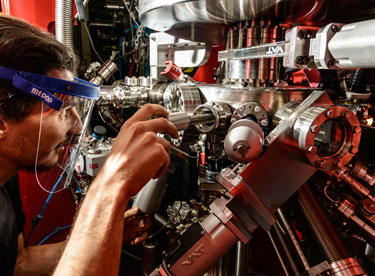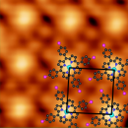
The properties of topological insulators are mostly dominated by their peculiar topological surface electronic states. Interfacing them with magnetic materials and harnessing their interactions can give rise to interesting quantum and topological phenomena that have inspired novel spintronic applications. Led by researchers from the Catalan Institute of Nanoscience and Nanotechnology, an international team with collaborators from CFM-San Sebastian, ETH Zurich, ISM-Trieste and the ALBA Synchrotron, have demonstrated that it is possible to balance electronic and magnetic interactions between single magnetic ions and topological surface states by coordinating the ions with different organic-ligands, leading to possible new routes to manipulate the electron spin at the interface with a topological insulator.
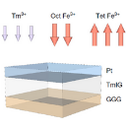
A chiral exchange interaction denominated Dzyaloshinskii-Moriya interaction (DMI) is responsible for exotic chiral and topological magnetic states such as spin spirals and skyrmions. A study lead by researchers at the Department of Materials Science and Engineering at Massachusetts Institute of Technology (US) reveals that in perpendicularly-magnetized iron garnets, rare-earth orbital magnetism gives rise to an intrinsic spin-orbit coupling generating interfacial DMI at mirror symmetry-breaking interfaces. The results have been published in Nature Communications.

Spin capacitors have been so far proposed theoretically and experimental realizations were either requiring very low temperature or exhibiting very small holding times for the storage “spin charge”. Remarkably, devices incorporating a hybrid MnOx/C60 interface, a particular metal oxide-fullerene heterojunction, have been shown to exhibit spin polarized charge trapping of electrons with large holding times at room temperature. The discovery, just published in Science Advances journal, is the result of a research collaboration lead by University of Leeds together with the ALBA Synchrotron, the Paul Scherrer Institute (Switzerland) and the Science and Technologies Facilities Council and the University of St Andrews, both in the UK.
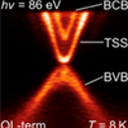
Following the experimental discovery of the first topological insulator (TI) Bi2Te3 in 2009, the discovery of MnBi4Te7 10 years later is another hallmark in this research field. This material features topological electronic order coexisting with an intrinsic net magnetization at low temperatures. The finding has been uncovered by an international collaboration including the teams from the universities and research institutes in Würzburg and Dresden, and has been corroborated by the measurements at Diamond Light Source (UK), the Advanced Light Source (US), Petra III-Desy (Germany) and the ALBA Synchrotron.
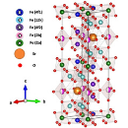
Researchers have synthesized and studied by a combination of soft X-ray techniques platelets of strontium hexaferrite allowing them to establish the differences and similarities between their synthesized nanostructures and commercial powders. Most of the experiments have been performed within a collaboration among three beamlines of the ALBA Synchrotron.


